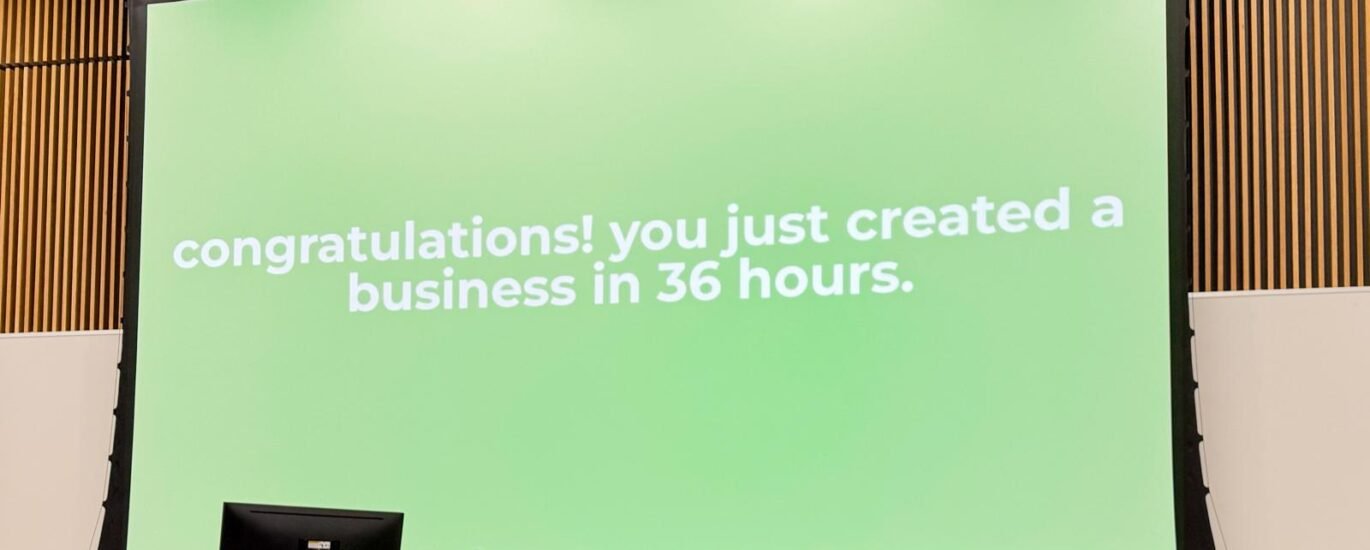


Creativity, at its core, is an act of trust. It’s about allowing ideas to evolve and giving space for them to breathe without suffocating under the weight of overmanagement. I’ve spent much of my life navigating the complexities of the creative process, from running my companies to working within global organizations like the United Nations, and most recently, mentoring students during Michigan State University’s 2Day Venture. At every stage, I’ve seen the delicate balancing act between granting creative freedom and maintaining structure. It’s this tension that I believe makes or breaks creative teams.
I’ve learned that the ability to balance freedom and oversight is more than a leadership skill—it’s the secret ingredient that turns good ideas into great ones.
During my mentorship yesterday at 2Day Venture, I was reminded of where I was a decade ago when I first started building my companies. I saw students presenting ideas that had tremendous potential, but some were hesitant to take advice. Even when I asked some of them reflective questions, they often clung tightly to their initial concepts. I understood this because I had been there before—caught between wanting to prove myself and being afraid to admit that someone else’s perspective could improve my work.
This phase, where creativity meets defensiveness, is crucial. It’s not just about giving advice but knowing when to step back and let someone make their own mistakes. That’s how creativity matures: through trial, reflection, and eventually, trust in the process.
In my own companies, that trust has been built over years. My team members, like Bill, understand the brands we’ve built together—Ntha Foundation and Kwathu Kollective—down to the smallest details. I no longer need to ask him whether he used the right shade of yellow for a project or if the branding aligns perfectly, because I know he’s internalized those details. His designs aren’t just company assets; they’re part of his creative legacy.
The New Bien Corp logo is a perfect example. The previous logo featured clear elements of B, C, and A, but the new iteration has evolved, and while I might not immediately see the embedded symbols, I trust that Bill’s thought process is there. I’ve learned that my role as a leader isn’t to interrogate every creative decision but to provide a space where my team feels empowered to give their best.
That trust wasn’t automatic. It grew as we worked together, made mistakes, and learned from them. What’s fascinating is that the trust I give them mirrors the trust I received from others in my own career.
At the United Nations, where I worked on initiatives like the Lessons Conversation and the National Evaluation Capacities Conference, the creative process looked very different. The structure of the organization required multiple feedback loops, approvals, and input from various departments. It was the opposite of the autonomous environment I had created in my own companies, but it wasn’t without its merits. Bureaucracy, when managed well, can provide valuable checks and balances.
Still, I saw firsthand how too much control can stifle creativity. Even though I was leading the media production teams, I had to wait for multiple layers of feedback before finalizing anything. That delay often dampened the initial spark of creativity. But within that system, I learned another important lesson: how to advocate for creative freedom within structured environments.
When working with the media teams, I made sure they knew I trusted their expertise. I didn’t micromanage every frame or every word. Instead, I focused on building their confidence by giving them space to make decisions. That autonomy, even within a bureaucratic structure, allowed them to innovate while minimizing mistakes.
So, how do you strike the balance between giving people the freedom to create and ensuring that mistakes don’t derail the entire project?
I believe it starts with setting clear expectations. Creative freedom doesn’t mean the absence of boundaries. It means creating an environment where people know the goals, understand the brand, and are empowered to explore within those parameters.
Here’s what I’ve found works best:
Reflecting on my experiences at 2Day Venture, with my companies, and at the United Nations, I realize that the common thread is growth—both for myself and the people I’ve worked with. I’ve seen how students, once defensive, eventually open up to new ideas. I’ve seen my team members evolve into creative leaders who understand the brands we’ve built together better than anyone else. And I’ve seen how, even in the most structured environments, advocating for creative freedom can lead to better outcomes.
Creativity is a journey, not a destination. It requires patience, trust, and the willingness to let go. As leaders, our role isn’t to control every step but to create an environment where creativity can thrive.
In the end, the balance between creativity and control is an art—one that I’m still learning. But if there’s one thing I know for sure, it’s that when you trust people to do their best, they often exceed your expectations.
So, whether I’m mentoring students, managing my team, or navigating bureaucratic systems, I hold onto one guiding principle: trust the process, and the results will follow.